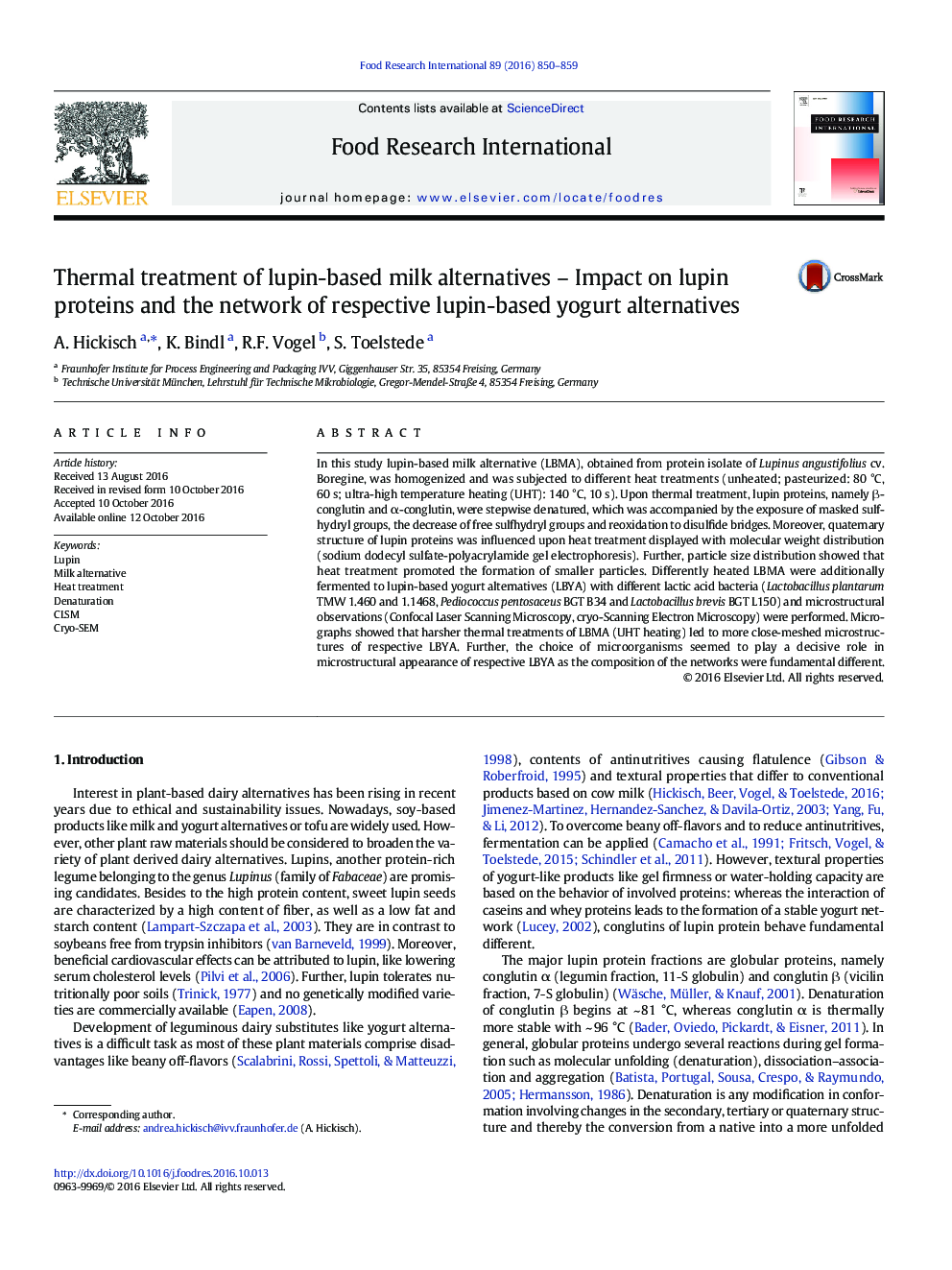| Article ID | Journal | Published Year | Pages | File Type |
|---|---|---|---|---|
| 6394958 | Food Research International | 2016 | 10 Pages |
â¢Upon heating of lupin-based milk alternatives, proteins were stepwise denatured.â¢Heating caused the exposure of sulfhydryl groups and oxidation to disulfide bridges.â¢Harsher heating led to more close-meshed networks of lupin-based yogurt alternatives.â¢Microstructural appearance of lupin-based yogurt alternatives was strain-dependent.
In this study lupin-based milk alternative (LBMA), obtained from protein isolate of Lupinus angustifolius cv. Boregine, was homogenized and was subjected to different heat treatments (unheated; pasteurized: 80 °C, 60 s; ultra-high temperature heating (UHT): 140 °C, 10 s). Upon thermal treatment, lupin proteins, namely β-conglutin and α-conglutin, were stepwise denatured, which was accompanied by the exposure of masked sulfhydryl groups, the decrease of free sulfhydryl groups and reoxidation to disulfide bridges. Moreover, quaternary structure of lupin proteins was influenced upon heat treatment displayed with molecular weight distribution (sodium dodecyl sulfate-polyacrylamide gel electrophoresis). Further, particle size distribution showed that heat treatment promoted the formation of smaller particles. Differently heated LBMA were additionally fermented to lupin-based yogurt alternatives (LBYA) with different lactic acid bacteria (Lactobacillus plantarum TMW 1.460 and 1.1468, Pediococcus pentosaceus BGT B34 and Lactobacillus brevis BGT L150) and microstructural observations (Confocal Laser Scanning Microscopy, cryo-Scanning Electron Microscopy) were performed. Micrographs showed that harsher thermal treatments of LBMA (UHT heating) led to more close-meshed microstructures of respective LBYA. Further, the choice of microorganisms seemed to play a decisive role in microstructural appearance of respective LBYA as the composition of the networks were fundamental different.
Graphical abstractDownload high-res image (197KB)Download full-size image
